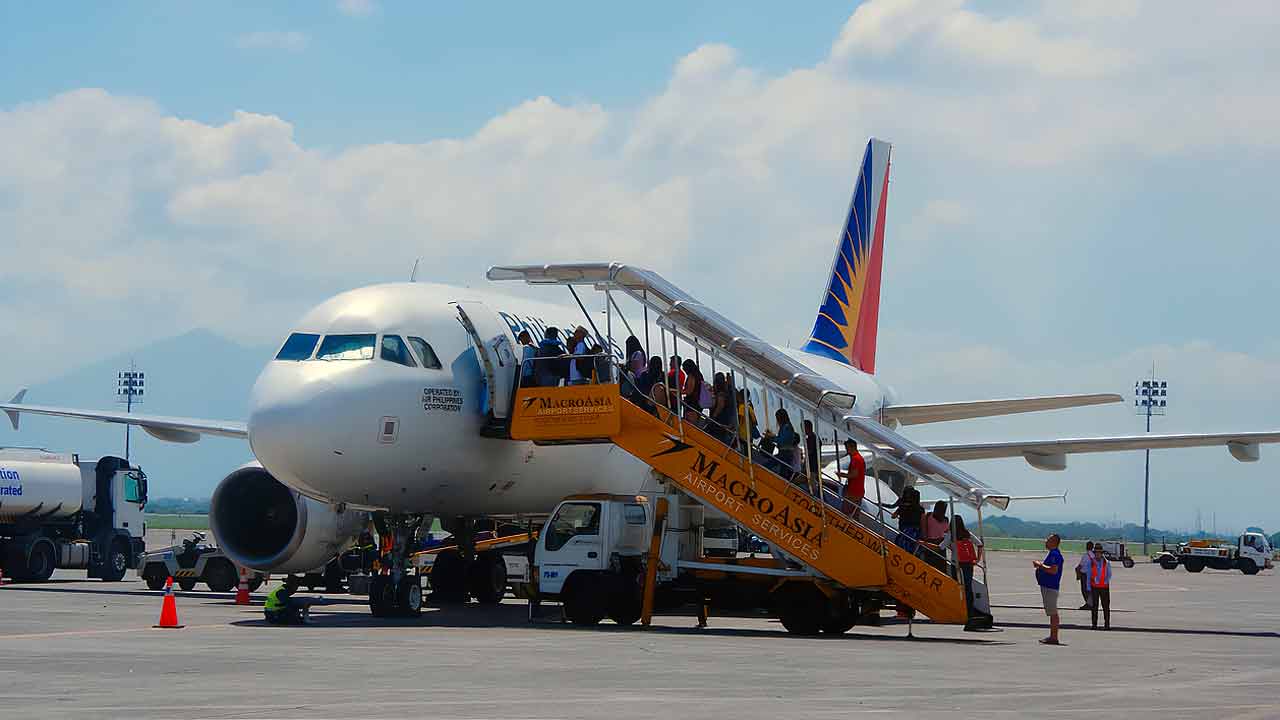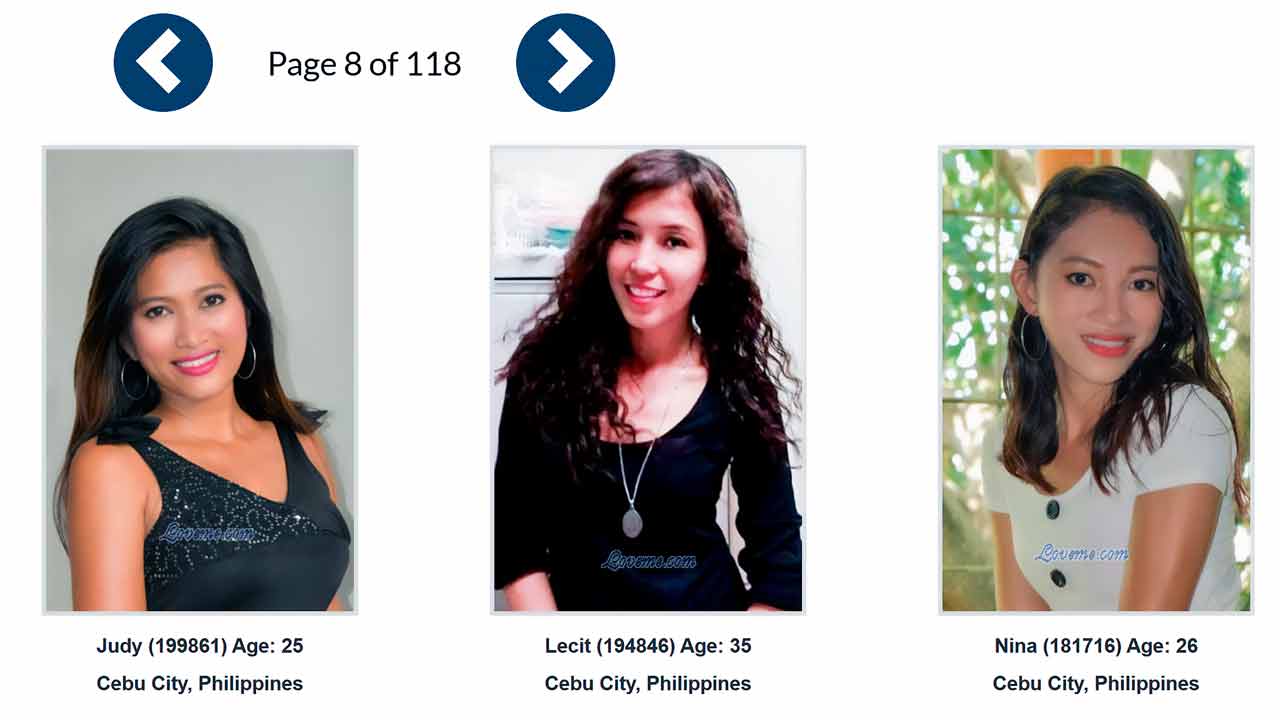A Complete Guide to Finding and Building a Future with a Filipina Wife
Introduction: Charting Your Course for a Lifelong Partnership
Embarking on a journey to find a wife in another country is one of the most profound and life-altering decisions a person can make. This is not merely a search for a partner but the beginning of a deep, cross-cultural union that requires patience, cultural fluency, and a genuine emotional investment that extends far beyond logistics and finances. The path to building a life with a Filipina wife is paved with unique cultural traditions, complex legal procedures, and immense personal rewards.
This report serves as a comprehensive roadmap for this journey, built on a foundation of profound respect for Filipino culture, its deep-seated family values, and the dignity and strength of Filipina women. Success in this endeavor is not measured by speed but by understanding. It demands a willingness to learn, adapt, and embrace a worldview where family is paramount and relationships are built on a bedrock of sincerity and patience. From the first online message to navigating the intricacies of immigration and finally building a new home together, this guide will provide the detailed knowledge necessary to chart your course with confidence, respect, and a clear understanding of every step ahead.
Part I: The Digital Handshake: Navigating the World of Online Dating
The Modern Search for Connection
In the 21st century, the search for a life partner often begins in the digital realm. International dating websites, such as filipinabridesonline.com, have become common tools for making initial connections across continents. These dating platforms can serve a purpose as a modern-day introduction service, but it is critical to view them as just that: a starting point. The ultimate goal must be to move beyond the platform’s structured, and sometimes transactional, environment toward a more genuine and personal mode of communication.
Reviews for such dating services are often polarized. Some users report finding loving, lifelong partners and praise the agencies for facilitating their introduction and assisting with the logistics of travel and paperwork. However, a significant number of reviews serve as stark warnings, detailing experiences with financial exploitation, dishonesty, and relationships built on false pretenses. This highlights a fundamental challenge: the very nature of some platforms, which may involve payment for communication, can establish a financial dynamic from the outset. This dynamic is the primary vulnerability that can be exploited, as it may attract individuals who view the relationship as a financial opportunity rather than a genuine partnership.
Due Diligence and Red Flags: Protecting Your Heart and Your Wallet
The risk of encountering scams in the world of online international dating is real and must be approached with vigilance. Foreigners are often perceived as universally wealthy, making them targets for sophisticated and patient scammers. Understanding the common tactics and red flags is the first line of defense.
Common scam tactics include:
- The Family Emergency: A sudden and urgent request for money to cover a supposed medical emergency for a parent or sibling.
- The “Investment” Opportunity: A scheme involving the purchase of land or property. Foreigners cannot legally own land in the Philippines, so any such transaction would require the property to be in the woman’s name, creating a situation ripe for fraud.
- The Sob Story: A pattern of conversations that consistently steer toward financial hardship, designed to elicit sympathy and voluntary offers of assistance without a direct request.
- The Visa Problem: A common ploy involves the woman claiming she can easily get a tourist visa to visit the man’s country if only she had help with fees or a “show money” deposit. In reality, obtaining a tourist visa to the US or Europe is exceedingly difficult for most Filipinos without significant personal assets, property, or a stable, high-paying job, making this claim a major red flag.
A practical checklist of red flags to watch for includes:
- Consistent refusal or inability to participate in live, unscripted video calls.
- Vague or contradictory answers to questions about her life, family, or work.
- Declarations of love and commitment that feel rushed and premature.
- Any communication that quickly and repeatedly focuses on financial problems.
- Pressure to send money before you have ever met in person.
From “Chat” to “Courtship”: Building a Genuine Foundation
The most critical step in this initial phase is to consciously pivot from the digital platform to a foundation of authentic courtship. This requires steering conversations toward topics of substance that demonstrate a genuine interest in her as a person: her family dynamics, her personal values, her aspirations, and the details of her daily life.
This pivot demands patience. The traditional Filipino courtship process, known as panliligaw, is a slow, deliberate, and respectful pursuit. It is fundamentally about demonstrating sincerity and earning trust over time. Any attempt to rush this process—to move too quickly toward declarations of love or discussions of marriage before a real-world relationship has been established—will be viewed as disrespectful and insincere. The most successful approach is to use the online platform solely for the initial introduction and basic verification through video calls. Once a baseline of trust is established, the conversation should move to free, personal communication methods. The dynamic must shift immediately from anything resembling “client and service provider” to that of a “sincere suitor and a respected lady.” This is the first and most important test of a man’s true intentions.
Part II: The First Visit: Planning Your Love Trip to the Philippines
Visa and Entry Essentials: The Paperwork First
Before booking any flights, understanding the entry requirements is paramount. The process is generally straightforward for tourists from Western countries, but the rules are strict and non-negotiable.
- For US Citizens: Upon arrival, US citizens are granted a 30-day visa-free stay. The two essential requirements are a passport with at least six months of validity remaining beyond the planned stay and a confirmed return or onward flight ticket. Failure to produce a departure ticket can result in being denied boarding by the airline or entry by Philippine immigration.
- For EU & UK Citizens: Nationals of most European Union countries and the United Kingdom enjoy the same 30-day visa-free entry privilege. The requirements for a passport with six months’ validity and a confirmed departure ticket are identical. A critical modern requirement is the mandatory registration with the Philippines’ “e-Travel” system. This online registration must be completed within 72 hours before boarding the flight to the Philippines, and the resulting QR code may be requested by the airline.
- Planning for a Longer Stay: If a stay of more than 30 days is anticipated, an extension must be sought from a Bureau of Immigration (BI) office within the Philippines. It is possible to apply for a 9(a) Temporary Visitor’s Visa in advance from a Philippine embassy or consulate, which can grant an initial stay of up to 59 days. Visa extensions are relatively affordable, with a single-entry extension costing around $30-$40 USD, plus processing fees.
Budgeting for Your Love Journey: A Detailed Cost
A trip to the Philippines can be tailored to almost any budget, but a realistic financial plan is crucial. The cost of travel is not a fixed number but a direct reflection of lifestyle choices. The financial gap between living like a local and living like a tourist is immense, and these choices carry cultural implications. While comfort and safety are important, making an effort to experience local life—eating at a clean carinderia with your girlfriend, trying a Jeepney ride together—demonstrates humility, cultural curiosity, and a willingness to meet her on her terms. This approach is not only more budget-friendly but is also a powerful way to build rapport and show respect.
- International Airfare:
- From the USA: A realistic budget for a round-trip ticket to Manila (MNL) from a major US hub is between $750 and $900. While one-way deals can sometimes be found for as low as $300, a round-trip fare of $668 was the cheapest found in a recent search. November is often the most affordable month to travel, while the peak holiday season in December is the most expensive.
- From Europe: Prices are highly variable. Budget-conscious travelers might find fares with multiple layovers for as low as ₱26,104 (approx. €435), but a more typical average for a comfortable flight from a major European city like Amsterdam or Paris is in the range of ₱40,000 to ₱65,000 (approx. €670 to €1,085). November tends to be the cheapest month, with July and August being the most expensive.
- Accommodation: A wide spectrum of options is available.
- Budget: Hostels and basic guesthouses can be found for as little as $9 to $25 per night.
- Mid-Range: Comfortable, well-regarded hotels in cities like Manila or Cebu typically cost between $40 and $80 per night. These usually include air-conditioning and other modern amenities.
- Luxury: High-end hotels and beachfront resorts generally start at $100 per night and can go much higher.
- Daily Expenses (On-the-Ground Costs):
- Overall Daily Budget: A frugal traveler can manage on $40-$50 per day. A more comfortable mid-range experience, allowing for nice meals, activities, and convenient transportation, will fall in the $80-$150 per day range. A two-week trip on a mid-range budget, including flights, is likely to cost between $3,000 and $4,000 in total.
- Food & Drink: This is an area where costs can be managed effectively. A meal at a local eatery (carinderia) can cost as little as $2-$5. A meal at a mid-range restaurant in a mall will be closer to $10-$20. Local beer is a bargain at $1-$2 per bottle, and local rum is famously inexpensive.
- Local Transportation: For safety and convenience, using the Grab app (Southeast Asia’s Uber) is highly recommended. A typical ride within a city costs between $3 and $8. Tricycles are suitable for very short trips ($1-$4), but fares should be agreed upon beforehand. The iconic Jeepney is the cheapest option at less than $0.50 per ride but can be crowded and confusing for first-time visitors.
- Entertainment & Activities: Costs are generally reasonable. A one-hour massage can be found for around $12. Island hopping tours, a quintessential Philippine experience, can range from $25 for a basic group tour to $85 or more for a private excursion with lunch.
Table 1: Estimated 2-Week Trip Budget to the Philippines (per person)
| Expense Category | Budget Traveler | Mid-Range Traveler | Luxury Traveler |
|---|---|---|---|
| International Flights (Round-trip) | $750 | $900 | $1,500+ |
| Accommodation (14 nights) | $280 ($20/night) | $840 ($60/night) | $2,100+ ($150+/night) |
| Food & Drink | $280 ($20/day) | $700 ($50/day) | $1,400+ ($100+/day) |
| Local Transport (Grab/Taxis) | $140 ($10/day) | $280 ($20/day) | $560+ ($40+/day) |
| Activities & Entertainment | $150 (Total) | $400 (Total) | $800+ (Total) |
| Miscellaneous & Gifts | $100 (Total) | $200 (Total) | $400+ (Total) |
| Total Estimated Cost (14 Days) | $1,700 | $3,320 | $6,760+ |
Note: Flight costs are based on averages from the USA; costs from Europe may vary. All other figures are synthesized from multiple travel cost analyses.
Part III: The Heart of the Matter: Courtship, Culture, and Family
The success of a relationship with a Filipina hinges on understanding and respecting a cultural framework that is profoundly different from that of the West. A Western man must fundamentally reframe his concept of a relationship: he is not just “dating a woman”; he is “courting a family.” The individual partnership is inextricably linked to, and conditional upon, the approval of the larger family unit. The family’s blessing is not a charming tradition; it is a non-negotiable prerequisite for the relationship to be considered legitimate and to progress towards marriage.
Understanding Filipino Courtship (Panliligaw): More Than Just Dating
Panliligaw is the traditional Filipino method of courtship, a formal, patient, and deeply respectful pursuit of a woman. It is characterized by a man’s effort to prove his sincerity and good intentions not only to the woman but, crucially, to her entire family. Traditional elements that still influence modern dating include:
- The Tulay: Literally “bridge,” this refers to a trusted intermediary—a mutual friend or a cousin—who helps facilitate communication, especially in the early stages. This shows respect for boundaries and avoids overly direct advances that might be seen as aggressive.
- Pakipot: Often translated as “playing hard to get,” this is a traditional practice where a woman remains reserved and does not immediately accept a suitor’s advances. This is not a game but a cultural mechanism to test the man’s sincerity, patience, and commitment.
Meeting Her: The First Date and Beyond
The first in-person meeting is a significant milestone. The choice of venue and conduct can set the tone for the entire relationship.
- Location: The first meeting should always be in a safe, public, and neutral space, such as a well-known coffee shop or a restaurant inside a reputable mall. Suggesting a meeting at a hotel is highly inappropriate and will be interpreted as having dishonorable intentions.
- Conduct: Filipino society is generally conservative regarding public displays of affection. While holding hands may become acceptable as the relationship and comfort level grow, more intimate gestures are reserved for a much later, more serious stage. It is also quite common, and a positive sign, for a chaperone—such as a sibling or cousin—to accompany the woman on early dates. This is a reflection of the family’s protective nature and involvement.
The Most Important Meeting: Winning Over Her Family
The true “main event” of the first trip is the meeting with her family. This is where a man’s character is judged, and his future with their daughter is unofficially decided. Every action is being evaluated by the entire family. The primary objective is to earn the trust, respect, and acceptance of her entire clan.
- The Approach: It is essential to bring pasalubong (gifts) when visiting the family home for the first time. Thoughtful gifts from the visitor’s home country are ideal. Classic choices include good quality chocolates for the family, especially the mother, and perhaps a bottle of whiskey or another respectable spirit for the father.
- Gestures of Respect: The mano po is a fundamental gesture of respect shown to elders. To perform it, one gently takes the elder’s offered hand and touches the back of it to one’s forehead. The use of honorifics like po and opo (a more formal “yes”) when speaking to elders is mandatory and shows good manners. After an initial introduction, it is common and appreciated to refer to her parents as Tito (uncle) and Tita (aunt).
- Proper Etiquette: Be humble, smile warmly, and make an effort to engage with everyone, not just the parents. A critical rule is to always accept food when it is offered. Refusing food is considered a major slight, as it can be interpreted as a rejection of their hospitality. Trying a little of everything and complimenting the cooking is a powerful way to show appreciation. Offering to help with clearing the dishes after the meal is another gesture that will be highly valued.
The Filipina Herself: Understanding Her Role and Values
It is crucial to move beyond stereotypes and understand the empowered and central role of women in Filipino society.
- Historical Strength: Pre-colonial Philippine society was often bilateral, meaning both maternal and paternal lines were valued. Women had rights to own property, engage in trade, and even become leaders in the absence of a male heir.
- The Ilaw ng Tahanan (Light of the Home): In the modern Filipino family, the woman is far from subservient. She is typically the family treasurer, managing the household budget and making key financial decisions. She is the Ilaw ng Tahanan, a role of immense authority and responsibility for the well-being and stability of the family. This is a position of power and respect.
Table 2: Key Filipino Cultural Concepts for Building a Strong Relationship
| Concept (Tagalog Term) | Literal Translation | Implication in a Relationship | Practical Example |
|---|---|---|---|
| Kapamilya | “Part of the family” | The family unit is not just nuclear but a vast, interconnected network. Your relationship is with the entire clan, not just one person. | Attending a family reunion and making an effort to remember the names of aunts, uncles, and cousins. |
| Utang na Loob | “Debt of gratitude” | A deep and lifelong sense of obligation to repay a favor or kindness. It is the foundation of reciprocal relationships. | If her family hosts you, you show gratitude by bringing thoughtful gifts and later, perhaps helping a younger sibling with educational advice or support. |
| Pakikisama | “Getting along” | The importance of maintaining social harmony and avoiding confrontation. It values group cohesion over individual assertiveness. | During a family discussion, listening more than speaking and avoiding direct contradiction of an elder’s opinion, even if you disagree. |
| Filial Piety | (No direct translation) | The profound and unquestioning respect for one’s parents and elders. It is the cornerstone of the family hierarchy. | Performing the mano po gesture upon greeting elders; using po and opo in conversation; seeking their advice on important matters. |
| Bayanihan | “Communal cooperation” | The spirit of communal unity and effort to achieve a common goal. It reflects a collective, rather than individualistic, mindset. | Contributing to a family fund for a celebration or helping with preparations for a family event without being asked. |
Part IV: Tying the Knot: Navigating Marriage in the Philippines vs. Your Home Country
The decision of where to get married is not primarily a romantic or logistical choice, but a critical immigration strategy decision. This choice dictates the entire legal pathway, timeline, and the nature of your spouse’s legal status upon arrival in your home country. The question is not simply, “Where should we have our wedding?” but rather, “Which immigration pathway is best for our situation, and therefore, where must we legally get married to enable that pathway?”
Option 1: Marrying in the Philippines
Marrying in the Philippines is a culturally meaningful act that deeply involves the family, but it is a bureaucratically intensive process that requires a significant time commitment in-country.
- The Legal Gauntlet:
- Certificate of Legal Capacity to Marry: This is the first and most critical document for any foreigner. It must be obtained in person from the foreigner’s embassy or consulate in the Philippines (e.g., the US Embassy in Manila or Cebu). This requires a pre-scheduled appointment, a valid passport, original or certified true copies of divorce decrees or death certificates to prove you are free to marry, and a fee (approximately $50 for US citizens).
- Marriage License Application: With the Certificate of Legal Capacity to Marry in hand, the couple must apply together for a marriage license at the Local Civil Registrar’s office in the municipality where the Filipina partner habitually resides.
- Mandatory 10-Day Public Notice: Philippine law requires that the marriage application be posted publicly for ten consecutive days. During this period, the couple is legally required to remain in the Philippines, as any person may file an objection to the marriage.
- Pre-Marriage Counseling Seminar: Attendance at a family planning and marriage counseling seminar is mandatory for all couples before the license can be issued.
- Parental Consent/Advice: For any partner aged 18 to 21, notarized written parental consent is required. For those aged 22 to 25, written proof that parental advice was sought is necessary.
- Cost & Ceremony: A simple civil wedding officiated by a judge or mayor is very affordable, costing between $100 and $200. A church wedding is a much larger and more expensive affair, with costs easily running into the thousands of dollars.
- The Modern Alternative: Online Marriage: A strategic alternative is a US-based virtual marriage, such as one legally officiated through Utah County, Utah. This option provides a US marriage certificate, which can significantly streamline the subsequent US immigration process by allowing the couple to immediately file for a spousal visa (CR-1) without the foreigner needing to travel to the Philippines for the legal paperwork. The US marriage can then be reported and registered with the Philippine authorities through the appropriate Philippine Consulate (e.g., the one in San Francisco for a Utah marriage), legitimizing it in both countries. This allows for a separate, non-legally-binding cultural celebration with the family in the Philippines at any time.
Option 2: Marrying in Your Home Country (The Fiancé(e) Visa Path)
This alternative path involves first securing a Fiancé(e) visa for your partner to travel to your country for the explicit purpose of marriage. This is logistically simpler from a wedding planning perspective but means her family will almost certainly be unable to attend the legal ceremony, which can be a significant emotional and cultural drawback. The specifics of this visa are detailed in the next section.
Part V: Closing the Distance: The Immigration Process
Immigrating to the United States
For US-bound couples, the choice between visa types represents a fundamental trade-off between the speed of initial reunion and the long-term security and empowerment of the arriving partner. While the desire to be together quickly is understandable, it is crucial to consider the implications of each path for your partner’s well-being and the establishment of an equitable foundation for your new life together.
- Path A: The K-1 Fiancé(e) Visa (If Marrying in the US)This path is for couples who are not yet married and intend to wed in the United States.
- Process: The US citizen (petitioner) files Form I-129F, Petition for Alien Fiancé(e), with U.S. Citizenship and Immigration Services (USCIS). The petition must include evidence that the couple has met in person at least once in the last two years and proof of a bona fide relationship and intent to marry.
- Post-Approval: Once approved, the case is sent to the National Visa Center (NVC) and then to the U.S. Embassy in Manila.
- Fiancée’s Role: The Filipina fiancée (beneficiary) completes Form DS-160 (Online Nonimmigrant Visa Application), undergoes a medical exam at an embassy-accredited clinic, and attends a visa interview in Manila.
- Arrival and Marriage: Upon her arrival in the US, the couple must marry within 90 days. The K-1 visa is not extendable. If the marriage does not occur, she must depart the US.
- Adjustment of Status: After the wedding, she must file Form I-485, Application to Adjust Status, to become a lawful permanent resident. She is not authorized to work until she receives an Employment Authorization Document (EAD), which she can apply for concurrently with the I-485. This period of waiting for work authorization can last for many months, creating a prolonged state of dependency.
- Path B: The CR-1/IR-1 Spousal Visa (If Already Married)This path is for couples who are already legally married (either in the Philippines, in the US via virtual marriage, or elsewhere).
- Process: The US citizen files Form I-130, Petition for Alien Relative, for their spouse.
- Post-Approval: The case moves to the NVC. Here, the couple pays processing fees, the US citizen submits Form I-864, Affidavit of Support, to prove financial capacity, and the Filipina spouse completes Form DS-260 (Immigrant Visa Electronic Application).
- Spouse’s Role: She attends a medical exam and an immigrant visa interview at the U.S. Embassy in Manila.
- Arrival in the US: This is the key advantage of this path. Upon entering the United States with her immigrant visa, she immediately becomes a Lawful Permanent Resident. Her Green Card is mailed to her, and she is authorized to work from day one. If the marriage was less than two years old at the time of her entry, her status is “Conditional” (CR-1), and the couple must jointly file to remove conditions two years later. If the marriage was over two years old, she receives a 10-year “Immediate Relative” (IR-1) green card.
Table 3: K-1 Fiancé(e) Visa vs. CR-1 Spousal Visa (USA)
| Feature | K-1 Fiancé(e) Visa | CR-1/IR-1 Spousal Visa |
|---|---|---|
| Prerequisite | Not yet married; intend to marry in the US. | Already legally married. |
| Primary USCIS Form | I-129F, Petition for Alien Fiancé(e) | I-130, Petition for Alien Relative |
| Approx. Total Processing Time | 6-9 months to US entry, plus 9-12+ months for Green Card after marriage. | 12-20 months until US entry. |
| Key Government Fees | ~$940 (I-129F + Visa Fee) + ~$1,225 (Adjustment of Status) = ~$2,165 | ~$1,305 (I-130 + Visa Fees + Immigrant Fee) |
| Legal Status Upon US Entry | K-1 Nonimmigrant. Must marry within 90 days and apply for Green Card. | Lawful Permanent Resident (Green Card holder). |
| Ability to Work Upon Entry | No. Must wait for Employment Authorization Document (EAD), which takes months. | Yes, immediately authorized to work. |
| Main Advantage | Generally faster for the partner to arrive in the US. | Partner arrives with full Green Card rights and can work immediately. |
| Main Disadvantage | Long period of legal/financial dependency after arrival; more total steps/cost. | Longer initial wait time before the partner can enter the US. |
Note: Processing times and fees are estimates and subject to change by USCIS. Fees are based on 2024 figures.
Immigrating to Europe (Using Germany as a Primary Example)
Immigration laws are highly specific to each European Union member state and are subject to frequent change. The following is a general guide based on the German model. It is imperative to consult the official website of your specific home country’s embassy in the Philippines for definitive, up-to-date requirements.
- The Principle of Family Reunification: The legal basis for spousal immigration in the EU is the principle of family reunification. A non-EU spouse of a citizen or legal resident generally has a right to join them, provided all conditions are met.
- General Process Overview:
- Application from the Philippines: Unlike the US K-1 visa, the Filipina spouse cannot travel to Germany on a tourist visa and then apply to stay. She must apply for a long-stay national “Family Reunification Visa” at the German Embassy in Manila before traveling.
- Key Documents: A legally binding, apostilled marriage certificate is the foundational document.
- Sponsor’s Requirements: The spouse residing in Germany will typically need to provide proof of stable and sufficient income to support the couple without relying on public funds, as well as proof of adequate living space.
- Language Proficiency: A crucial requirement for Germany, and many other EU countries, is that the immigrating spouse must demonstrate a basic knowledge of the German language, typically at the A1 level of the Common European Framework of Reference for Languages. This often requires taking a certified language course and passing an exam in the Philippines before the visa can be approved.
Part VI: Building a New Home: Integration and Lifelong Partnership
The husband’s role must evolve from “suitor” and “sponsor” to “primary integration partner.” His wife’s successful and happy adaptation is a shared responsibility. His proactive efforts to connect her with her new environment are just as critical as the legal paperwork that brought her there. This active support is the most powerful tool to combat homesickness, prevent the isolation that can poison a marriage, and demonstrate a continued commitment to her holistic well-being.
The First Year: Navigating Cultural Adjustment
The transition to a new country and culture is a significant challenge. A new Filipina wife will likely face a period of adjustment that can include:
- Profound Homesickness: Filipino culture is fundamentally communal and family-centric (kapamilya, bayanihan). Being uprooted from this deeply connected support system can lead to intense feelings of loneliness and isolation.
- Cultural Shock: Adjusting to a new climate, different food, unfamiliar social norms, and a more individualistic societal structure can be overwhelming.
- Communication Barriers: Even if she speaks English well, she may struggle with local accents, slang, and the nuances of a different communication style.
The Role of Community: Finding a “Home Away from Home”
Connecting with the local Filipino diaspora is not just a social activity; it is a vital lifeline for cultural and emotional support. These communities effectively recreate the essential support system she has left behind.
- USA: The US has a large and well-established Filipino-American population. Resources like the Fil-Am Community Directory can be a starting point. Contacting the nearest Philippine Consulate General is an excellent way to get a list of registered local organizations.
- Europe: Filipino communities are vibrant and growing across Europe.
- In Germany, there are over one hundred Filipino civic organizations, many of which are church-based. The Federation of Filipino Organizations in Northern Germany (FFONG) is one such example. Platforms like InterNations can help connect with Filipino expats in cities like Berlin, Munich, and Frankfurt.
- In France, organizations like the Gabay Association in Paris offer language classes and cultural support. InterNations is also active in connecting the Filipino community in Paris and other cities.
- In Italy, organizations like the Filipino Women’s Council advocate for migrants’ rights, and financial integration services like FIILA exist to help Filipinos navigate the local economy.
Sustaining the Bond: Best Advice for a Strong Intercultural Marriage
- Open Communication: Recognize and be patient with potential differences in communication styles. She may be less direct or confrontational. Practice active listening and create a safe space for her to express her feelings without judgment.
- Maintain Family Ties: The marriage includes a lifelong connection to her family in the Philippines. This bond, which is reinforced by the cultural value of utang na loob (debt of gratitude), may involve providing ongoing emotional and, at times, financial support. This must be a topic of open, honest, and ongoing conversation between the two of you, establishing boundaries and expectations that are comfortable for both.
- Empowerment and Independence: Actively support your wife in building her own independent life in her new home. Encourage and facilitate her pursuits, whether it’s further education, finding employment that matches her skills, or joining hobby groups. Fostering her confidence and helping her create her own social circles is essential for her happiness and the health of the marriage.
Part VII: Frequently Asked Questions (FAQ)
On Finding a Partner & First Steps
1. Is it safe to use online dating sites to meet a Filipina?
It can be, but extreme caution is necessary. Use sites for introduction only, verify identity via video calls, and never send money. Be aware of common scam tactics.
2. What are the biggest red flags to watch for when dating online?
Refusal to video chat, stories that don’t add up, and any conversation that quickly turns to requests for money are major red flags.
3. What is the most important thing to know about Filipino dating culture?
It is family-centric. You are not just courting a woman; you are courting her entire family. Their approval is essential.
On Travel & Costs
4. What is a realistic budget for a two-week first visit to the Philippines?
Excluding international flights, a mid-range budget would be approximately $1500-$2000, covering comfortable accommodation, a mix of local and restaurant dining, and activities. A total trip cost, including flights from the US/Europe, would be around $3,000-$4,000.
5. Do I need a visa to visit the Philippines?
Citizens of the US, UK, and most EU countries do not need a visa for tourist stays of up to 30 days, provided they have a valid passport and a return ticket.
6. What is the ‘e-Travel’ system?
It is a mandatory online registration that all travelers must complete within 72 hours before arriving in the Philippines. You will receive a QR code upon completion.
On Culture & Etiquette
7. What is the single biggest mistake a foreigner can make when meeting his girlfriend’s family?
Refusing food that is offered. This is considered a grave insult to their hospitality. Always accept and try at least a small amount.
8. What is mano po?
It is a traditional gesture of respect where you take an elder’s hand and gently touch the back of it to your forehead. It should be done when greeting parents and grandparents.
9. Should I bring a gift when meeting the family?
Yes, absolutely. This is called pasalubong. Gifts from your home country, like chocolates or a bottle of whiskey for the father, are excellent choices.
10. What does Utang na Loob mean for our relationship?
It means a “debt of gratitude.” It implies a lifelong sense of reciprocity. Your marriage will involve a deep, ongoing connection to her family, which may include providing support, as she feels a cultural duty to honor the sacrifices they made for her.
On Marriage & Legalities
11. What is a ‘Certificate of Legal Capacity to Marry’?
It is a document issued by your home country’s embassy in the Philippines that certifies you are legally free to marry. It is a mandatory requirement for a foreigner to get a marriage license in the Philippines.
12. How long does it take to get a marriage license in the Philippines?
After applying, there is a mandatory 10-day public notice period during which you must remain in the country. You must also attend a pre-marriage counseling seminar.
13. Is it better to get married in the US/Europe or in the Philippines?
This is a strategic immigration decision. Marrying in the Philippines is culturally significant but requires more time in-country and locks you into the longer CR-1 Spousal Visa process. Marrying in your home country allows for the K-1 Fiancé(e) Visa path but means her family likely cannot attend.
14. Can we get married online?
Yes. A legal online marriage through a US jurisdiction like Utah County is a viable option. It provides a US marriage certificate, simplifying the US immigration process. The marriage must then be registered with Philippine authorities to be recognized there.
On Immigration
15. What’s the main difference between a K-1 Fiancé Visa and a CR-1 Spousal Visa for the US?
A K-1 is for fiancés to marry in the US; a CR-1 is for those already married. The key difference is status upon arrival: a K-1 holder cannot work until they adjust status after marriage (a lengthy process), while a CR-1 holder arrives as a full permanent resident with the immediate right to work.
16. Which US visa process is faster?
The K-1 visa is generally faster to get your partner into the US (6-9 months). However, the CR-1 visa, while taking longer upfront (12-20 months), is faster to get her a Green Card and the right to work.
17. What are the main income requirements to sponsor my wife for a US visa?
The US citizen sponsor must meet income requirements set at 125% of the Federal Poverty Guidelines for their household size. If you cannot meet this, you may be able to use a joint sponsor or certain assets.
18. What is the process for bringing my wife to a European country like Germany?
She must apply for a “Family Reunification Visa” from the German embassy in the Philippines before traveling. This requires an apostilled marriage certificate, and proof of your income/housing in Germany and her basic German language skills (A1 level).
On Integration
19. What is the best way to help my new wife adjust to her new country?
Actively connect her with the local Filipino community. Find Filipino grocery stores, restaurants, church groups, and community organizations. This support network is a vital lifeline to combat homesickness and isolation.
20. Will my wife be expected to send money back to her family?
This is a very common and culturally ingrained practice. It is an expression of utang na loob. This should be discussed openly and honestly between the two of you to set expectations and financial boundaries that are sustainable for your new family unit.























































